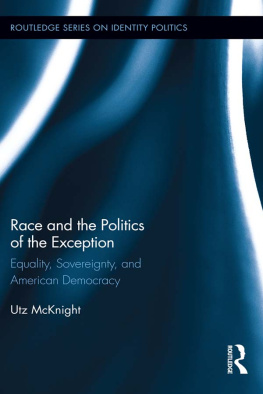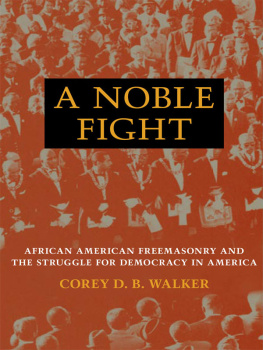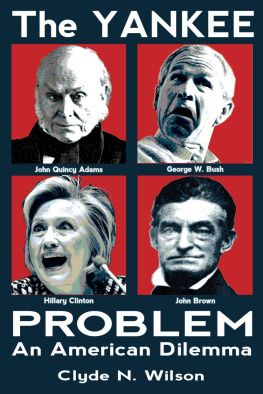Contents
An
American
Dilemma
Volume II
GUNNAR MYRDAL
With a New Introduction by SISSELA BOK
An
American
Dilemma
Volume II
The Negro Problem and Modern Democracy

Original edition published in 1944 by Harper & Row, Publishers.
Copyright 1944, 1962 by Harper & Row, Publishers, Incorporated.
Published 1996 by Transaction Publishers
Published 2017 by Routledge
2 Park Square, Milton Park, Abingdon, Oxon OX14 4RN
711 Third Avenue, New York, NY 10017, USA
Routledge is an imprint of the Taylor & Francis Group, an informa business
New material this edition copyright 1996 by Taylor & Francis
The introduction to this edition originally appeared in Daedalus (Winter 1995) and is published by permission of Sissela Bok.
All rights reserved. No part of this book may be reprinted or reproduced or utilised in any form or by any electronic, mechanical, or other means, now known or hereafter invented, including photocopying and recording, or in any information storage or retrieval system, without permission in writing from the publishers.
Notice:
Product or corporate names may be trademarks or registered trademarks, and are used only for identification and explanation without intent to infringe.
Library of Congress Catalog Number: 95-31355
Library of Congress Cataloging-in-Publication Data
Myrdal, Gunnar, 1898-1987
An American dilemma: the Negro problem and modern democracy / Gunnar Myrdal, with the assistance of Richard Sterner and Arnold Rose; with a new introduction by Sissela Bok.
p. cm.(Black and African-American studies)
Originally published: New York: Harper & Brothers, 1944. (With new introd.)
Includes bibliographical references (p. ) and index.
ISBN: 1-56000-858-X (pbk. : set: alk. paper).ISBN 1-56000-856-3 (pbk. : v. 1 : alk. paper).ISBN 1-56000-857-1 (pbk. : v. 2 : alk. paper) 1. Afro-Americans. 2. United StatesRace relations. I. Sterner, Richard Mauritz Edvard, 1901- . II. Rose, Arnold Marshall, 1918-1968. III. Bok, Sissela. IV. Title. V. Series.
EI85.6.M95 1995
305.896 073dc20 95-31355
CIP
ISBN: 978-1-56000-857-6 (pbk) (vol. 2)
ISBN: 978-1-56000-858-3 (set)
NOTE
The footnotes to Volume II appear immediately following page 1180 of the text, and are folioed as in the original one-volume edition, as pages 1335 through 1439. The footnotes to Volume I appear in Volume I, also with the original pagination.
African-American Studies
Doris Y. Wilkinson, Series Editor
Against the Odds, Wilbur H. Watson
An American Dilemma, Volimes I and II,
Gunnar Myrdal
Bitter Canaan,
Charles S. Johnson
Black Folk Medicine, edited by Wilbur H. Watson,
with a foreword by Doris Y. Wilkinson
Dusk of Dawn, W. E. B. Du Bois,
with a new introduction by Irene Diggs
In the Shadow of the Plantation, Charles S. Johnson,
with a new introduction by Joseph Himes
The Man Fathest Down, Booker T. Washington and Robert E. Parks,
with a new introduction by St. Clair Drake
Race, Radicalism and Reform, Abram L. Harris,
edited and with an introduction by William Darity, Jr.
Contents
Volume II
LIST OF TABLES
Volume II
Chapter 40
Table 1. Negro Membership in Harlem Churches by Denomination: 1930 865
Chapter 43
Table 1. Number and Rate of Illegitimate Births by Nativity, Section and Rural-Urban Residence: 1936 932
Table 2. Proportion Broken Families of All Families: 1930 934
Table 3. School Attendance in the United States, Ages 5-20, by Race:1850-1940 942
Table 4. School Attendance, Ages 7-20, by Race and Region: 1930 943
Table 5. Years of School Completed, by Persons 25 Years Old and Over, by Race, for the United States, Rural and Urban Areas :1940 944
Table 6. Ratio of Negro to White Pupils in Public Schools by Grades, in 18 Southern States:1933-1934 944
Footnote 20. Organizations and Activities of 609 Urban Churches 1427
Chapter 44
Table 1. Prisoners Received from Courts by State and Federal Prisons and Reformatories by Sex, Race and Nativity: 1939 971
Table 2. Male Felony Prisoners Received from Courts by State and Federal Prisons and Reformatories, by Geographic Areas and by Race and Nativity: 1939
Table 3. Distribution of Arrests according to Race and Type of Offense (Excluding Those under Fifteen Years of Age) :1940 973
Appendix 4
Table 1. Various Definitions of the South 1072
Appendix 6
Table 1. Nonagricultural Industries and Service Groups Having 15,000 Negro Workers or More: 1930 108
Table 2. Percentage of Nonrelief White Families, in Selected Income Groups, Who Had Expenditure for Household Help: 1935-1936 1084
Table 3. Range between Local Wage Rates for Domestic Work, in Selected States, according to Estimates by State Employment Offices :January, 1939 1085
Table 4. Average Earnings and Hours of Work for Lumber Workers in the South by Type and Branch of Industry and by Color: 1939-1940 1093
Table 5. Percentage Distribution of Logging and Sawmill Workers by Average Hourly Earnings, by Type and Branch of Industry and by Color, in the South: 1939-1940 1093
Table 6. Occupations in Lumber Mills (Sawmills, Logging, Maintenance and Service Branches) by Average Hourly Earnings of White Workers, and Difference between Average Earnings of White and Negro Workers, in the South: 1939-1940 1094
Table 7. Percentage of Negroes among Longshoremen and Stevedores in Selected States:1910 and 1930 1097
Part VI
Justice
CHAPTER 24
Inequality of Justice
The American tradition of electing, rather than appointing, minor public officials are either elected for limited terms or are dependent for their offices upon political representatives of this uncertain tenure. In some places they can even be recalled during their terms of office, though this is comparatively rare.
The immediate dependence of court and police officials upon popular electionthat is, upon local public opinion and political machinesinstead of upon appointment strictly according to merit, and the uncertainty of tenure implied in this system naturally decreases the attractiveness of these important positions to many of the best persons who would otherwise be available. Professional standards are thus kept lower than those which could be attained under another system. The courts do not get the cream of the legal profession. The social prestige of judges in local courts is not as supreme as could be wished. Corruption and undue political influences are not absent even from the courtrooms. These facts themselves have the circular effect of keeping the best men from judicial positions.
But, apart from such general effects, the fact that the administration of justice is dependent upon the local voters is likely to imply discrimination against an unpopular minority group, particularly when this group is disfranchised as Negroes are in the South. The elected judge knows that sooner or later he must come back to the polls, and that a decision running counter to local opinion may cost him his position. He may be conscious of it or not, but this control of his future career must tend to increase his difficulties in keeping aloof from local prejudices and emotions. Of course, the judges attitudes are also formed by conditions prevalent in his local community, but he has a degree of acquaintance with the law, and with public and legal opinion outside his community. This would tend to emancipate him from local opinion were it not for his direct dependence on it.






